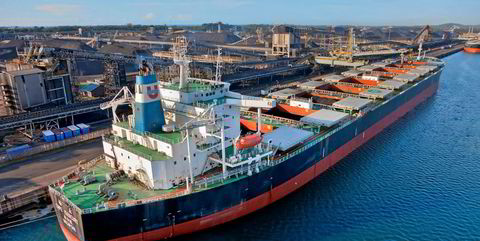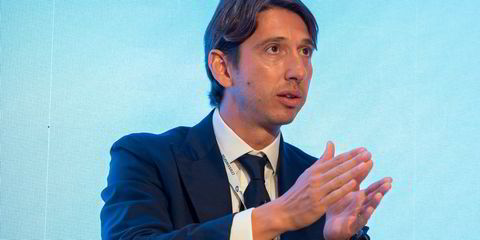Paris-based GDF Suez is preparing the ground to issue invitations to tender for front-end engineering and design work on its $5 billion Cameroon LNG export scheme.
Foster Wheeler wrapped up pre-FEED studies in mid-2011 and will likely be a key contender to secure the full design job, which is due to start in the second half of next year.
Raphael Tilot, GDF’s head of Cameroon LNG, said on the sidelines of the Gastech conference in London this week, however, that this will be a competitive tender and Foster Wheeler would not be an automatic winner.
He declined to specify when bid documents would be released in order to meet the second-half 2013 start schedule because the timing depends on securing access to gas feedstock. Tilot also refused to forecast when the LNG train could come on-stream but industry sources suggested 2018-2019 could be a realistic time frame.
The West African LNG plant will be hosted on a 470-hectare site about 30 kilometres south of Kribi.
Tilot said an Air Products’ liquefaction process was studied in the pre-FEED phase but stressed that the choice of technology “will be revisited” during the upcoming studies.
Feedstock for the 3.5 million tonnes per annum, single-train plant will come from a variety of offshore gas fields operated by Bowleven, Noble Energy, Perenco and Sinopec-owned Addax Petroleum.
Between them, these companies control about 3 trillion cubic feet of unexploited gas that will be fed to the plant via a 270-kilometre trunkline.
Both the pipe and LNG facility will be owned by Cameroon LNG, a joint venture between GDF and state-owned Societe Nationale des Hydrocarbures.
Term sheets have been signed with all four field operators with GDF’s emphasis now on converting these into solid sales contracts. “The focus now is on the upstream part of the project. We have great relationships with the producers and we need to deepen our relationships,” said Tilot.
Marketing of the end product is also under way.
Martin Folo, an executive with SNH, said GDF Suez will be the sole gas off-taker for the first train “but for subsequent trains that would not be the case”.
Cameroon’s government is hopeful that fiscal incentives will encourage exploration specifically for gas that could then feed a second LNG train.
Over and above the 3 Tcf of gas to be dedicated to train one and 1 Tcf to be used as feedstock for a power plant at Kribi, Folo said the country has the potential to house up to 20 Tcf of resource.
Just last week, Addax found 200 billion cubic feet of gas, plus 20 million barrels of liquids, with its Padoux-1X exploration well in the offshore Iroko licence.




